
人工智能正在重塑企业获得见解的方式, 自动化工作流程,并在 2025 年做出决定。现在,有78%的组织在至少一个业务职能中使用人工智能,高于去年的55%,因此选择正确的平台至关重要。本文回顾了六位领先者 商业智能的人工智能工具,重点是其功能、成本效率和实时分析:
每个平台都能平衡可扩展性、集成和成本节约,使其成为旨在利用人工智能加快决策和提高生产力的美国企业的理想之选。下面,我们将深入探讨他们的独特功能,帮助您找到最适合您需求的产品。
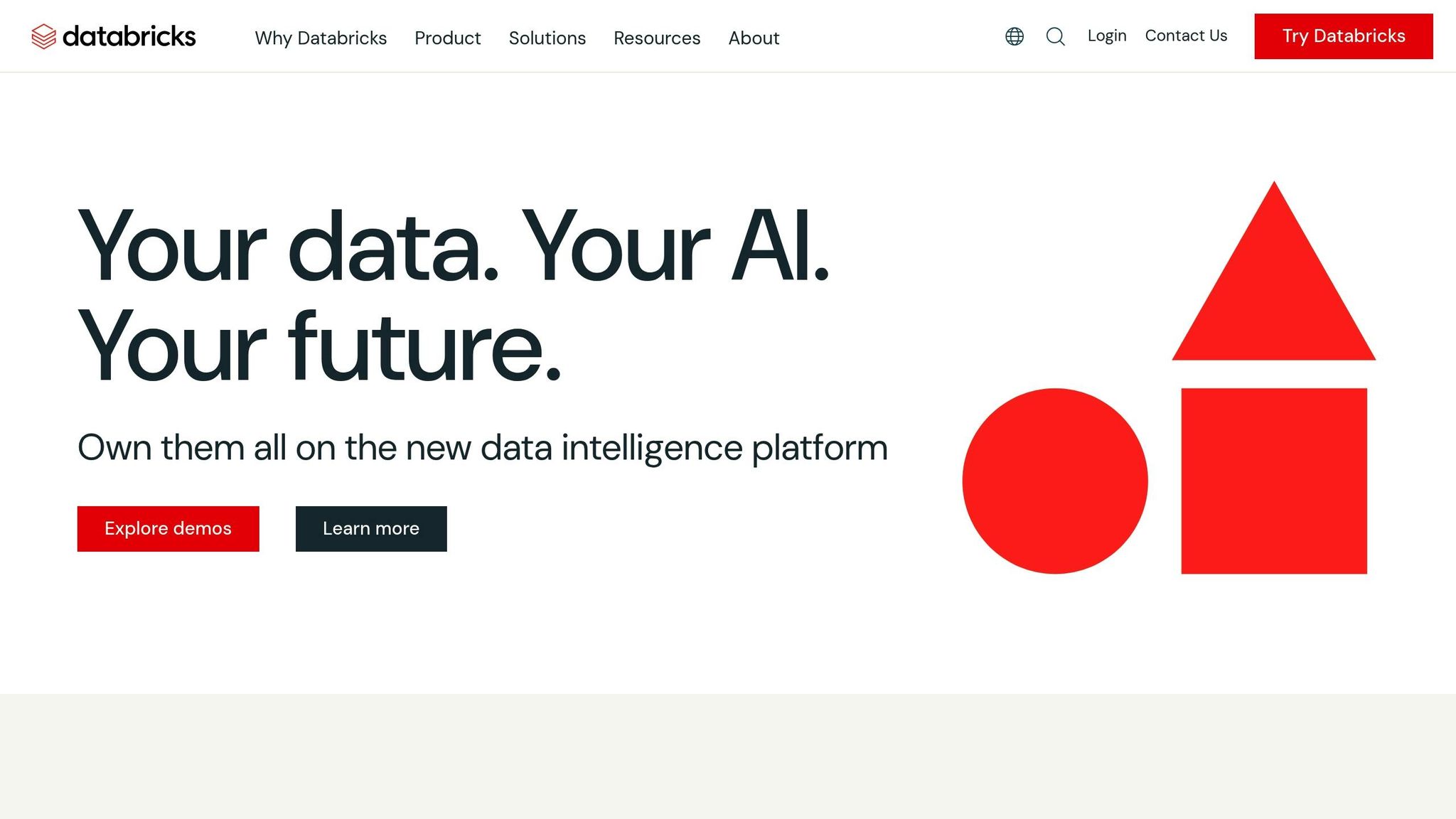
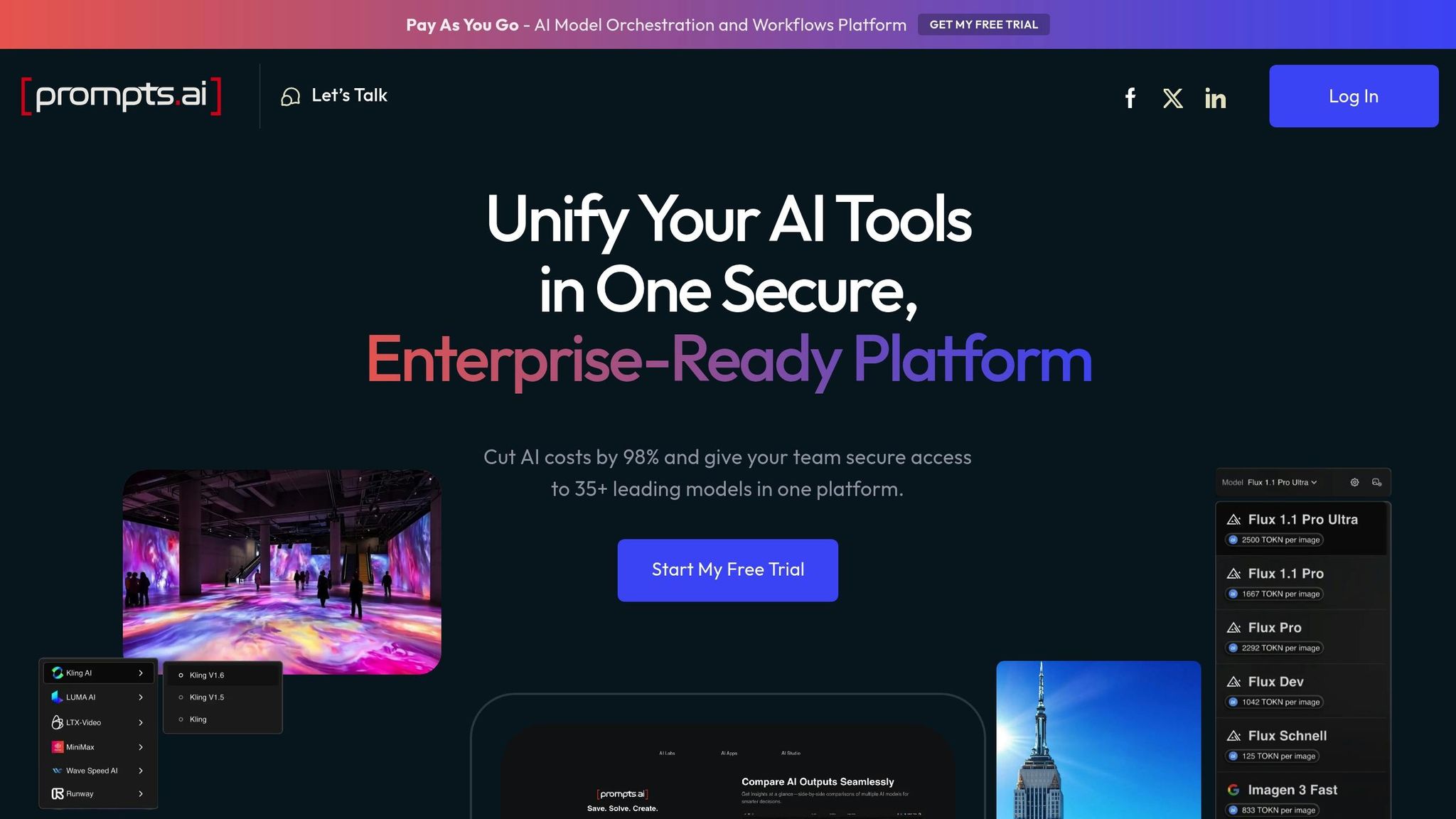
Prompts.ai 解决了美国企业面临的关键挑战,包括种类繁多的人工智能工具和成本管理的复杂性。通过提供对超过 35 种领先的大型语言模型的访问权限,例如 GPT-5、Claude、 美洲驼,以及 双子座 -通过单一的安全平台,它简化了操作。这种简化的方法消除了兼顾多个供应商关系和单独订阅的麻烦。
该平台旨在使人工智能易于访问,同时确保企业级控制。Prompts.ai 不是将组织局限于一个模型,而是让团队能够为每项任务使用最佳模型。例如,数据分析师可能依赖 Claude 进行复杂的推理,并切换到 GPT-5 执行自然语言任务,所有这些都在同一个界面中完成。
Prompts.ai 的统一平台还可以帮助企业有效管理成本。其内置的FinOps层提供实时成本跟踪和透明度,将人工智能支出直接与业务成果联系起来。团队和项目可以监控代币的使用情况,确保资源的有效分配。例行任务会自动路由到具有成本效益的模型,而更高级的任务则使用更高端的选项。即用即付的TOKN积分系统确保组织仅按实际用量付费,从而更容易根据需求扩大开支。
Prompts.ai 在互操作性方面表现出色,将超过 35 种大型语言模型集成到一个平台中。这种灵活性使企业可以避免受制于单一的人工智能生态系统,而是随着新模型的出现或需求的变化调整其工具。
该平台的并排模型比较功能使团队可以实时测试同一任务上的多个模型。这可确保在承诺全面实施之前对绩效进行全面评估,从而使企业对自己的人工智能选择充满信心。
Prompts.ai 整合了强大的治理功能以满足企业需求。全面的审计跟踪和数据保护措施确保敏感信息保持安全。自动化流程可处理数据清理并减少敏感信息的暴露,从而简化了对监管标准的合规性并减少了手动工作。
Prompts.ai 通过实时分析和预建的提示模板提高了商业智能工作的效率。这些功能最大限度地减少了切换上下文和执行重复任务所花费的时间。团队可以在整个组织中标准化和共享有效的提示,从而加快洞察力。实时性能监控可跟踪 AI 分析的准确性和工作流程的效率,从而实现持续改进。这种能力突显了人工智能如何改变商业智能,推动更快、更明智的决策。
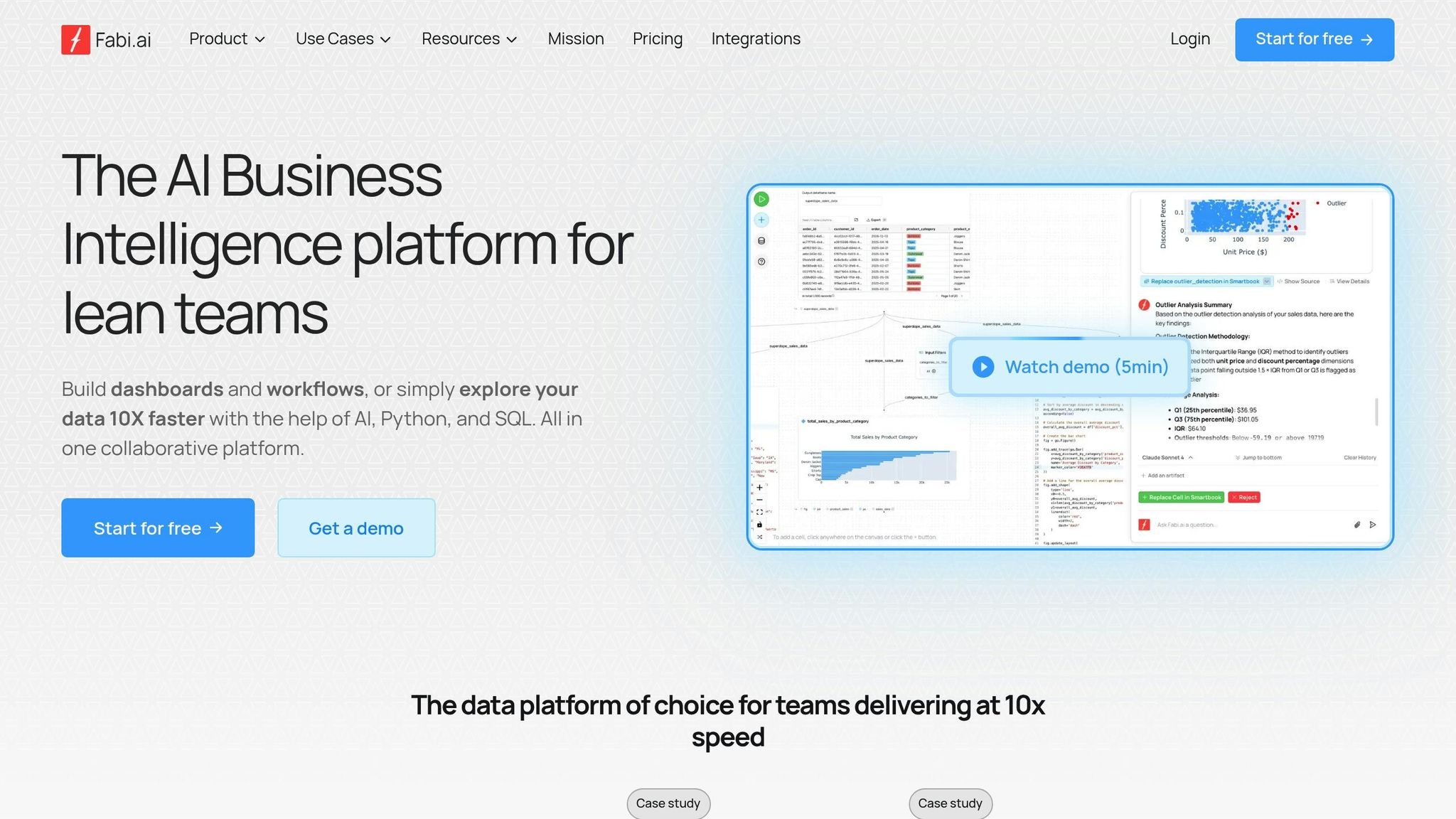
Fabi.ai 是一个基于云的平台,旨在通过人工智能驱动的自动化彻底改变商业智能。在首席技术官唐雷的领导下,他拥有来自雅虎等公司的多年经验, 沃尔玛实验室, Lyft,以及 克拉里,Fabi.ai 解决了现代数据团队面临的日益严重的挑战。
该平台的突出特点是它能够 将数据分析速度提高多达 10 倍 使用人工智能辅助的 SQL 和 Python 代码生成。速度的显著提高直接转化为更高的业务效率,不同行业的可衡量改善就证明了这一点。
Fabi.ai 建立在云原生架构之上,显著减少了数据团队的工作量,将工单量减少了 80-90%。这使较小的团队能够处理更多的分析请求。这种可扩展性的关键部分来自 智能书,它提供高级计算和虚拟机管理功能。这些工具对于处理来自多个来源的大型数据集至关重要。
“增强分析需要大规模分析来自各种不同数据源的数据。这需要先进的计算和虚拟机管理,这在传统 BI 中很少见,但在 Fabi.ai Smartbooks 等现代数据分析平台中越来越常见。”
Fabi.ai 还使非技术用户能够通过自然语言查询独立探索数据,从而赋予他们权力。这消除了商业智能工作流程中的传统瓶颈,从而可以更快地获得见解。其强大的技术基础自然补充了其集成能力。
Fabi.ai 与各种工具和平台无缝集成,使其成为不同数据生态系统的多功能选择。它支持主要的数据仓库,例如 雪花, Bigquery, 亚马逊 Redshift, PostgreSQL的, MySQL,以及 Databricks,以及像 SaaS 这样的应用程序 Airtable, HubSpot, 条纹,以及 PostHog。这为分析创建了统一的环境。
该平台的 谷歌表格集成 脱颖而出,提供可将电子表格转换为交互式仪表板的连接器和模板。自动化工作流程将人工智能驱动的见解分发给 Slack 和 Microsoft Teams 等工具,确保决策者及时收到更新。
“关键不是要有一个平台来统治所有人。相反,数据团队应该专注于为他们需要完成的每项特定工作寻找最佳工具,并确保这些工具在现有堆栈中正常运行。”-Marc Dupuis,首席执行官兼联合创始人 @ Fabi.ai
Fabi.ai 通过简化工作流程和提高效率来节省切实的成本。例如,Hologram 将其获得收入洞察的时间缩短了 94%,商业智能负责人扎伊德·阿里重点介绍了从日终交付成果向 几分钟内即可获得实时答案。同样,obé Fitness 将其数据分析周转时间缩短了 75%,而 Lula Commerce 得救了 每周 30 小时的手动数据工作 通过自动化。
该平台提供灵活的定价,以适应各种规模的企业。它是 免费入门套餐 提供基本功能,而 Builder 计划位于 39 美元/月 迎合个人分析师的需求。团队计划,定价为 199 美元/月,支持多达四名用户无限制的 AI 请求,为企业解决方案提供了一种经济实惠的替代方案,通常每月从 500 美元到 1,500 美元不等。
通过在基本定价中纳入自动报告和仪表板创建,Fabi.ai 无需使用其他工具,从而减少了运营开支。其一体化环境最大限度地减少了上下文切换,进一步推动了效率的提高。
Fabi.ai 通过 AI 辅助工具和自动化工作流程增强商业智能,使用户能够在很短的时间内进行复杂的数据探索、编码和调试。这大大缩短了从问题到见解的路径。
例如,Parasail.io 生成内部报告的速度比传统 BI 工具更快,而 Lumo 的产品负责人现在分析遥测数据 几分钟而不是几小时,允许更快的产品迭代。这些改进之所以成为可能,是因为Fabi.ai 将 SQL、Python 和 AI 自动化集成到一个协作平台中。
“Fabi.ai 将整个工作流程整合到一个简单直观的平台中。这是对现有商业智能的完美补充。”-Sunobi分析总监大卫·海德
该平台的实时功能还包括自动数据丰富和转换工作流程,这些工作流程直接连接到业务通信渠道。这可确保利益相关者无需人工干预即可立即获得见解,从而巩固了 Fabi.ai 在重塑商业智能中的作用。
Databricks 人工智能/商业智能精灵 正在通过启用自然语言查询和提供企业级数据处理来重塑商业智能。Genie建立在Databricks Lakehouse平台上,允许用户用通俗易懂的英语提问,并快速从数据中获得切实可行的见解——无需任何技术专业知识。
在预览阶段,超过4,000名客户采用了Genie来扩大其组织内部的数据访问范围。这种热情的采用凸显了其简化复杂数据系统的能力,使需要快速、可靠答案的业务用户能够访问这些系统。Genie 的坚实基础确保它能够扩展以处理最苛刻的数据需求。
Genie 的云原生设计和分布式计算能力使其善于管理庞大的数据集。通过利用 Databrick 的 SQL 和 Unity Catalog,它无需复制即可对实时数据进行操作,提供 对最新信息进行实时分析。与许多其他工具不同,Genie可以不受列限制地查询整个数据集。
该平台还支持数据网格架构,使各个部门能够建立自己的精灵空间。例如,一家物流公司为物流和财务业务创建了单独的空间。Databricks 的无服务器 SQL 仓库通过自动调整工作负载需求、高效处理并发查询和处理任务来确保可扩展性。
Genie凭借其与各种商业智能工具的无缝集成而脱颖而出,包括十六进制、Power BI、Preset、Qlik、Sigma和Tableau。Unity Catalog 通过提供详细的元数据(例如世系、文档、标签和查询历史记录)来丰富这种集成,从而确保有效的治理。对于在Databricks生态系统之外使用其他工具的组织,Genie的兼容性通过Atlan等元数据管理平台进行了扩展,创建了增强自动化和治理的 “目录目录”。
Genie的统一架构通过消除对数据复制的需求和简化许可结构来降低成本。各公司报告称,节省了大量资金——MagicOrange节省了10万美元,Italgas将工作量成本削减了73%,FunPlus将效率提高了20%。这些节省还加速了数据访问的民主化,同时减少了与自建解决方案相关的费用。
现有的 Databricks SQL 客户无需支付额外许可费即可访问 Genie,因为标准的 Databricks SQL 费率适用。此外,Mosaic AI 模型服务提供灵活的按代币付费定价,没有最低承诺,使其成为各种规模企业的经济实惠的解决方案。
Genie 使用户能够提出自然语言问题并获得即时结果,从而彻底改变了实时分析。SEGA 欧洲的洞察时间缩短了 10 倍,显著提高了自助分析的生产力。Genie 还允许用户直接在仪表板中提出后续问题,从而减少对数据分析师的依赖。
“我们正在使用Databricks AI/BI Genie来帮助决策者实时提出有关消费者行为的临时问题,而不必依赖我们的数据专家来构建仪表板和查询。”-世嘉欧洲数据服务主管费利克斯·贝克
Grupo Casas Bahia 利用 Genie 的自然语言查询、预测建模和实时欺诈检测来改变其零售策略。同时,机管局报告说,处理常规查询的效率提高了70%。
举一个例子,一位供应链分析师在 2025 年 5 月使用 Genie 来查询风险库存,即时接收 SQL 输出、可视化和切实可行的见解。
“AI/BI Genie为我们的客户填补了一个令人沮丧的空白。它使他们能够实时回答意想不到的财务问题,即使在高风险会议期间也是如此。”-首席技术官迈克尔·布伦南
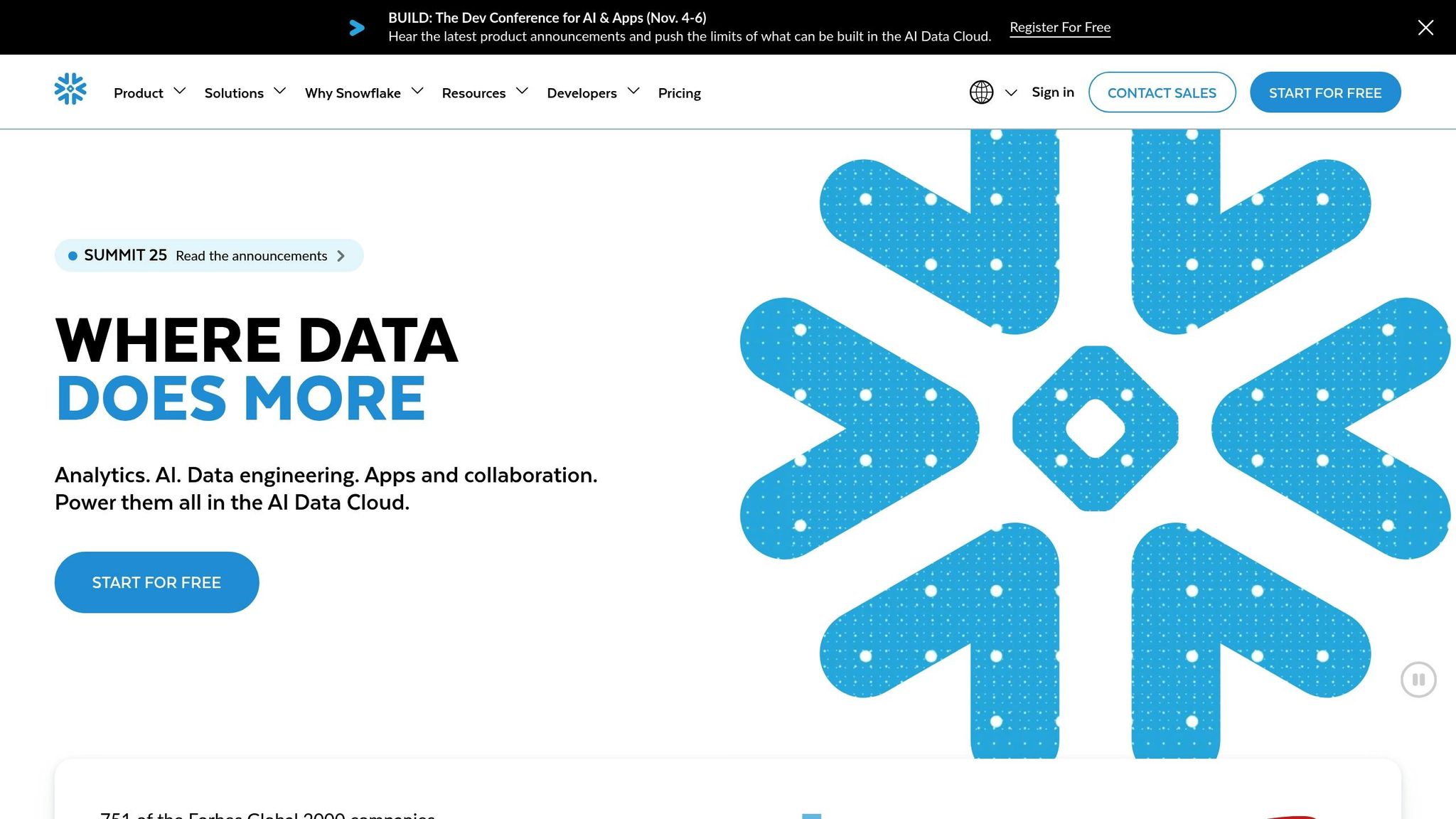
雪花皮层分析师 正在通过为结构化数据提供对话界面来重塑商业智能。它在客户评估和内部基准测试中实现了大约 90% 或更高的准确性,用于生成 SQL 代码。该工具使业务用户能够使用自然语言提问并几乎立即获得答复,从而消除了传统仪表板创建和技术依赖性造成的延迟。
该平台的核心是由先进的人工智能系统驱动的,该系统利用了顶级LLM,例如Meta的Llama和Mistral模型。其功能包括问题理解、语义丰富、多 LLM SQL 生成和错误更正代理。这些组件共同提供的结果几乎是单次生成 SQL 的两倍。
“如果内部职能用户可以直接在企业数据上提出具体问题,并通过基本的可视化获得回应,会怎么样?这种能力的核心是对结构化数据自然语言查询的高质量响应,并以可持续的运营方式使用。这正是 Snowflake Cortex Analyst 为我们提供的。我最兴奋的是我们才刚刚起步,我们期待通过Snowflake Cortex AI释放更多价值。” ——拜耳中国北美产品负责人数据平台Mukesh Dubey
Cortex Analyst 旨在轻松进行扩展。它自动管理 GPU 容量规划和基础架构,在不增加资源负担的情况下实现顺畅的 BI 运营。
该平台利用 Snowflake 的可扩展引擎来执行生成的 SQL 查询,从而在数据量和查询需求增加时确保一流的性价比。这种设置允许组织在不产生高昂成本的情况下扩展其分析能力。集成的成本管理工具即使在使用量增长的情况下也能保持系统的可靠性和一致的响应时间。
Cortex 分析师整合 无缝融入现有工作流程,使其成为任何组织的多功能补充。其 API 优先设计使其能够连接流行的工具,例如 Streamlit 应用程序、Slack、微软团队和自定义聊天界面,直接向工作地点的用户提供见解。
该平台还利用语义模型、桥接自然语言查询和数据库定义的轻量级 YAML 文件。这种方法显著提高了文本到 SQL 转换的准确性。此外,组织可以调整第三方语义层以在 Cortex Analyst 中使用,从而确保顺利集成到现有的数据生态系统中。
“Cortex Analyst旨在与Snowflake更广泛的生态系统无缝集成,包括用于构建交互式数据应用程序的Streamlit、用于执行复杂数据工作流程和机器学习模型的Snowpark以及用于数据分类和合规的Snowflake的治理和政策框架等工具。这种原生互操作性确保组织能够以高度定制和可扩展的方式扩展对Cortex Analyst的使用,无论是将见解嵌入到运营仪表板中、触发工作流程还是支持预测分析。” — Grazitti Interactive
开发人员可以利用这种灵活性来创建可接受自然语言问题的交互式应用程序,并使用 Cortex Analyst 生成精确答案。这些应用程序可以将见解嵌入仪表板或自动化工作流程,从而提高运营效率。
Cortex Analyst 通过自动执行通常需要大量技术资源的复杂人工智能开发任务来显著降低总拥有成本 (TCO)。其完全托管的基础架构可处理模型评估、微调和 GPU 容量规划,无需手动监督。
该平台使用基于处理的消息数量而不是代币数量的简单信用使用模型。这种方法简化了预算并确保了可预测的定价。此外,综合的成本治理控制进一步有助于提高成本效率。
通过使业务用户能够使用自然语言查询数据,Cortex Analyst 减少了对数据团队处理临时请求的依赖。这不仅降低了与自定义仪表板开发和培训相关的成本,而且还使技术团队腾出时间专注于更具战略性的计划。
Cortex Analyst 通过即时将自然语言查询转换为优化的 SQL 来提供近乎实时的响应。这种快速获得见解的方法可以加快决策速度,并消除了传统商业智能仪表板和报告经常出现的延迟。
其自主人工智能系统可确保可靠的实时分析,防止幻觉等问题并保持高准确性。用户可以直接与 Snowflake 中的结构化数据进行交互,受益于企业级可扩展性和低延迟查询性能。
“一旦完全成熟,Cortex分析师将提高生产力。我正在考虑如何衡量它。这将是展示人工智能商业价值以及投资于GPU、数据中心和软件的数千亿美元投资回报率的关键。” — Humble-learner9,Snowflake销售工程师
该平台还支持多回合对话,允许用户在先前的查询基础上进行更深入的数据探索。该功能重点介绍了可互操作的人工智能解决方案如何简化商业智能流程并增强不同环境中的分析。
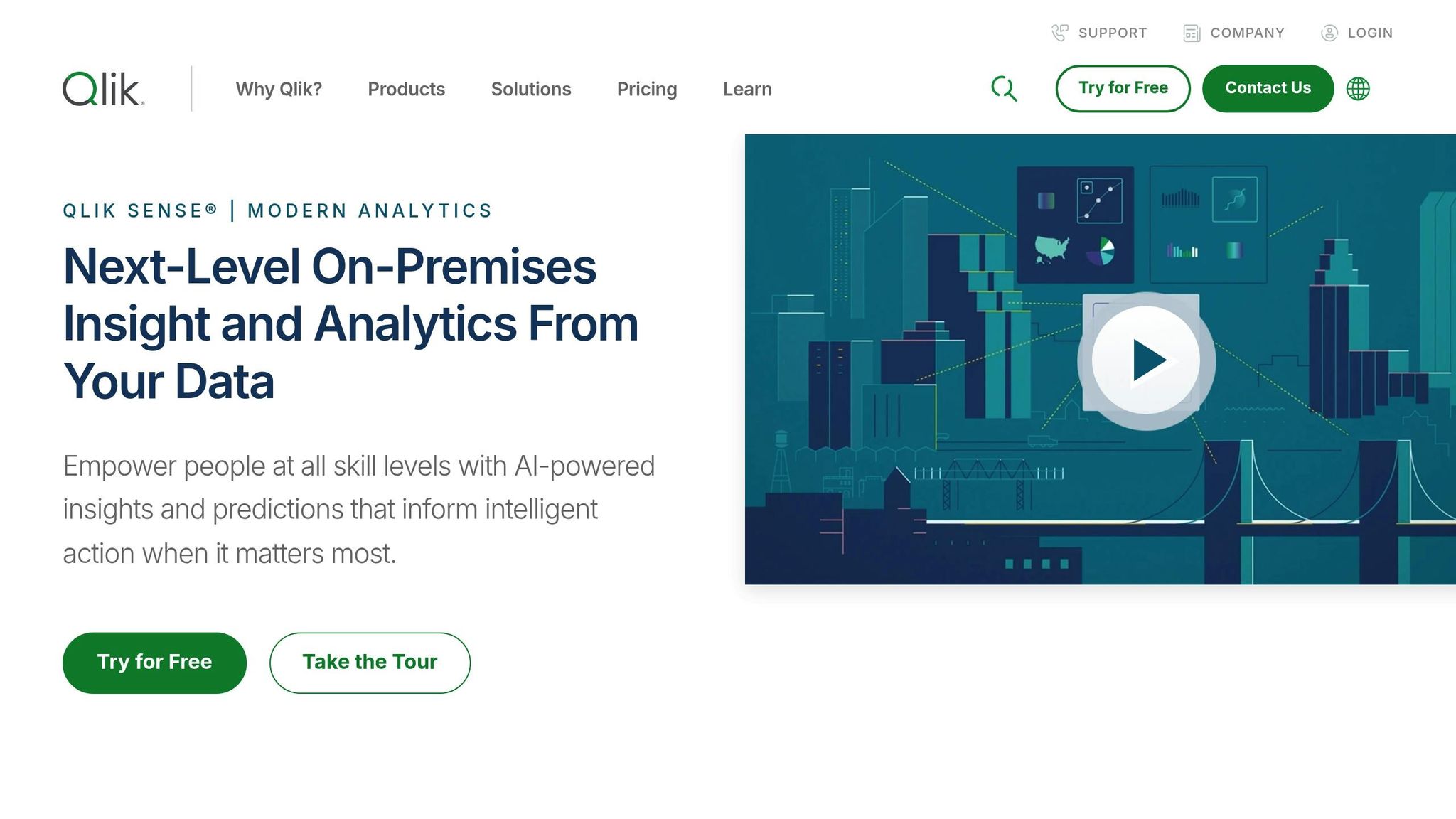
Qlik Sense 作为数据分析的动态工具脱颖而出,将高级分析与可扩展性和无缝集成相结合。通过利用人工智能驱动的关联分析,它可以实现快速的数据探索和决策。它的 QIX 引擎处理内存中的数据,将数据大小减少到仅为其原始容量的10%。这样即使是最大的数据集也可以快速分析。
Qlik Sense 的与众不同之处在于其关联模型,它使用户可以自由探索数据关系,而不必坚持预定义的查询路径。这种方法超越了传统仪表板的局限性。
“我们可以以前所未有的方式轻松挖掘和解锁见解。这一切都是为了集中资源和时间,而Qlik可以让你做到这一点。” — 本田
Qlik Sense 提供灵活的可扩展性选项,以满足不同的部署需求。 Qlik 云分析 根据需求自动调整计算资源,每个租户支持多达 100,000 个用户,以及内存大小高达 50 GB 的应用程序,重装大小高达 240 GB。
对于寻求本地解决方案的组织, Qlik Sense 企业版 提供用于性能测试和硬件基准测试的工具。它可容纳支持多达 15,000 个并发用户的集群,相当于总用户数约 300,000 个,并发率为 5%。
“Qlik Cloud Analytics 消除了估计、采购、运行和管理基础设施的复杂性和成本,因为它包含在订阅中。更重要的是,用户满意度更高,因为处理增加的负载是即时的,不受基础设施采购、安装和配置延迟的影响。” — Qlik Cloud 帮助
Qlik Sense 擅长连接各种数据源,从数据库和云服务到应用程序和文件。集成解决方案将其覆盖范围扩展到诸如SAP之类的平台, 销售部队、Snowflake、Databricks、AWS、Azure 和谷歌。借助其开放式 API 架构,企业可以自定义分析并将其嵌入到其现有系统中,从而实现量身定制的可视化、扩展和工作流程。
最近的更新进一步增强了其功能。2025 年 5 月版本引入了原生 JSON 支持,简化了对来自物联网设备和现代 Web 应用程序的复杂数据的处理。此外,原生正则表达式支持现在允许直接在加载脚本和图表表达式中进行高级文本模式匹配和转换。
“必须为我们的经理提供一个可通过移动应用程序轻松访问的解决方案,以便为他们提供实时信息。” — 三星零售
“移动设备上的实时数据和警报使三星零售业能够确保我们不关注噪音,而只关注切实可行的见解。” — 三星零售
Qlik Sense 通过自动化工作流程和启用自助分析来帮助组织削减成本。企业报告称,花在数据分析上的时间最多减少了30%,从而显著节省了劳动力成本。它的定价很灵活,入门计划下10位用户的起价为每月200美元,企业解决方案提供自定义选项。这种分层结构支持即用即付的方法,使管理总体支出变得更加容易。
真实的例子凸显了其财务影响。一家金融机构每月节省了120小时的报告时间,在第一年内实现了112%的投资回报率,而一家零售连锁店则优化了库存,在短短18个月内削减了18%的成本并实现了205%的投资回报率。
Qlik Sense 的内存引擎实时处理数据,在数据更新时提供即时见解和计算。其关联分析引擎允许用户动态探索数据关系,无需等待预先汇总的结果。
该平台支持实时数据流和高级分析集成,包括来自领先数据科学平台和Qlik AutoML的预测计算。这些工具允许用户将预测见解直接嵌入到仪表板中,从而实现更快、更明智的决策。
移动设备可访问性确保决策者无论身在何处都能获得实时见解。该平台的移动应用程序提供即时警报和可操作的数据,帮助组织专注于真正重要的事情。
“在现阶段,我相信Qlik是一项安全的投资,因为该平台具有可扩展性和灵活性,可以适应大数据格局的持续快速变化。” — element61
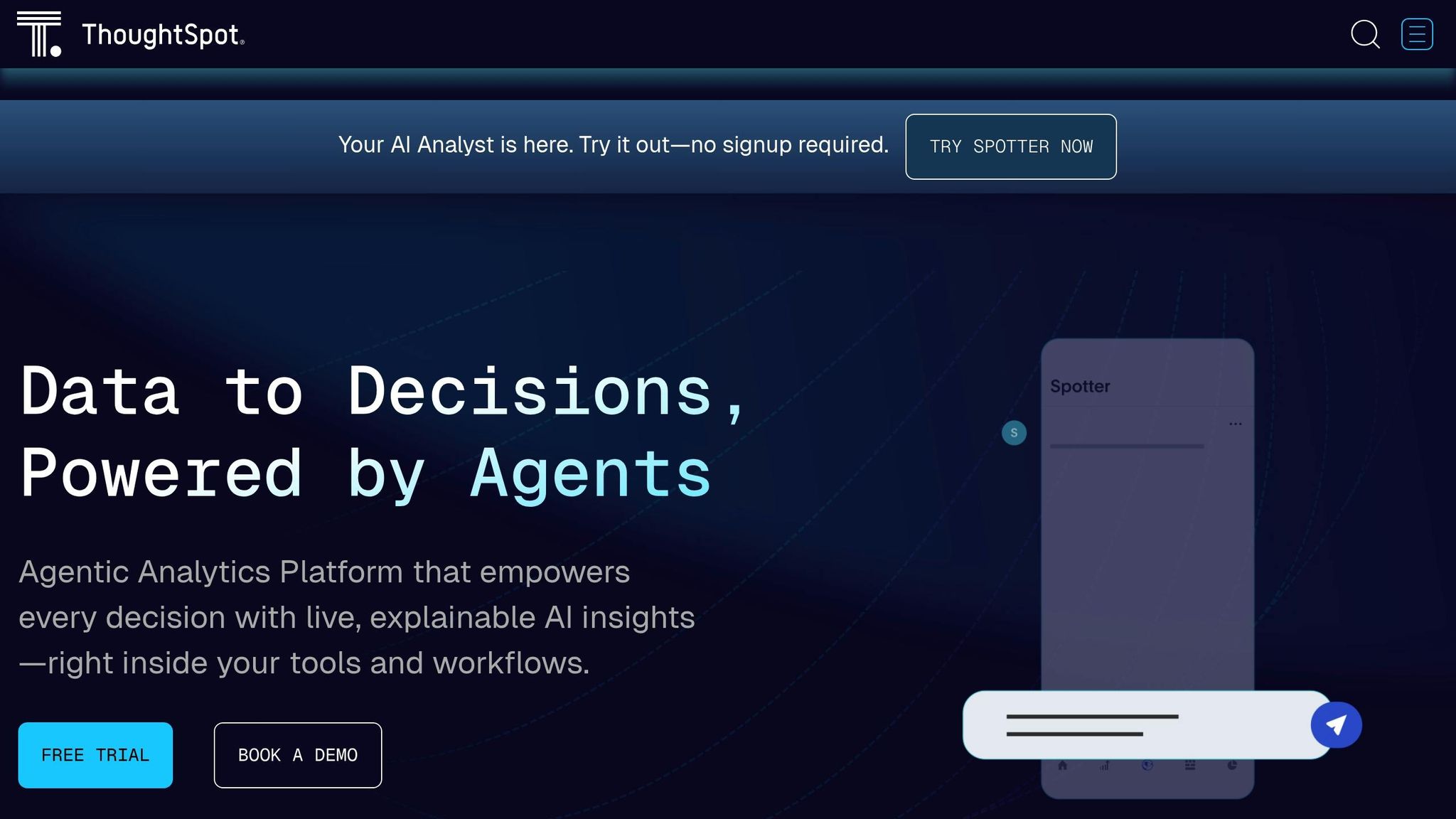
ThoughtSpot 正在通过提供搜索驱动的分析平台来重塑企业进行数据探索的方式,该平台使用通俗易懂的英语查询提供即时见解。该平台无需技术知识或 SQL 专业知识,即可直接连接到云数据仓库,从而提供任何人都可以轻松访问和理解的实时见解。
ThoughtSpot 功能的核心是两个突出的功能: 观察者,一位提供对话见解的人工智能分析师,以及 SpotIQ,它会自动识别数据中的隐藏模式和异常。这些工具可以帮助组织超越标准的 “发生了什么” 报告,以解决诸如 “为什么会发生这种情况?” 之类的更深层次的问题以及 “接下来会发生什么?”
“公司90%的成员仍然依赖于10%的数据团队。那不是数据民主化。ThoughtSpot 几乎改变了游戏规则。” — Lyft 工程经理 Kishore Narahari
ThoughtSpot 采用云原生架构构建,旨在随着数据量和用户需求的增长轻松扩展。它直接处理针对Snowflake、谷歌BigQuery和亚马逊Redshift等云数据仓库的查询,从而无需重复数据或进行复杂的管理。无论是处理 TB 还是 PB 的数据,该平台都允许组织根据需要增加或减少计算容量,从而确保稳定的性能。它的内存处理可确保快如闪电般的查询响应,即使是复杂的数据集也是如此。
ThoughtSpot的定价模式与其可扩展设计一致,为各种规模的企业提供了灵活的选择。这个 必备套餐 小型公司的起价为每月1,250美元,而 专业版 和 企业 计划为大型组织提供量身定制的价格。对于嵌入式分析, 开发者等级 最多可供10名团队成员免费使用和2500万行,使其成为测试和概念验证项目的绝佳选择。
ThoughtSpot擅长与现代数据生态系统整合,提供与Snowflake、谷歌BigQuery、亚马逊Redshift、Databricks和微软Azure Synapse等领先云仓库以及PostgreSQL和MySQL等传统数据库的实时连接。它是 代理模型上下文协议 (MCP) 服务器 使其脱颖而出,成为第一个支持与自定义人工智能代理和平台(例如 Claude、Gemini 和 ChatGPT)进行企业就绪集成的商业智能平台。这允许用户将ThoughtSpot的分析功能直接引入其现有的人工智能工作流程。
“与 Snowflake 的集成完美无瑕。我们已经从静态仪表板转向了实时分析,没有回头。” — Capterra评论
对于希望将分析嵌入其工具的组织,ThoughtSpot提供与Salesforce等应用程序的无缝集成, ServiceNo,以及通过 JavaScript 开发工具包和 Web 组件提供的自定义产品。这样可以确保分析可以在用户最需要的地方使用,而不必在平台之间切换。此外,作为开放语义交换(OSI)的创始成员,ThoughtSpot正在帮助建立语义层的通用标准,简化数据定义并加快各行业的采用。
ThoughtSpot 将治理和合规性放在首位,使其成为受监管行业的绝佳选择。该平台执行精细的安全措施,包括行级、列级和对象级访问控制,确保用户只能看到有权查看的数据。审计跟踪跟踪数据访问和系统变更,支持医疗保健、金融和制药等领域的合规性。通过直接从云数据仓库继承安全策略,ThoughtSpot 在保持数据完整性的同时简化了治理。
该平台还包括一个 AI 信任层 确保 AI 生成的见解保持准确并以业务数据为基础。用户可以查看 AI 生成的答案背后的 SQL 查询,从而完全透明。这些全面的控制措施使 ThoughtSpot 能够在不影响安全性的前提下提供可靠和及时的见解。
ThoughtSpot 能够直接在云仓库中查询数据,可确保通过近乎实时的更新进行实时分析。它是 活板 提供交互式仪表板,在新数据可用时自动刷新,提供动态的最新见解。
“借助ThoughtSpot,我们的财务团队可以更快两天向领导者提供更详细的见解,从而使分析师能够产生更大的影响力。” ——洞察交付分析师本杰明·范德·海德
该平台的搜索驱动界面允许用户即时探索数据关系,人工智能会建议后续问题并进行可视化。这消除了通常与依赖预定义报告的传统 BI 工具相关的延迟。像Electronic Arts这样的公司利用这些功能使利益相关者能够独立获得见解,而嘉信力旅运则使用ThoughtSpot的Spotter来增强自助分析,确保用户能够快速找到所需的答案。
每个平台都有自己的一系列优势和挑战。以下是基于先前详细审查的简化比较,重点介绍了每种审查的主要优点和局限性。
Prompts.ai 提供全面的人工智能编排解决方案,无需使用多种工具,同时通过其即用即付TOKN信用系统确保管理和实时成本控制。它最大的优势是有可能显著降低人工智能软件费用。但是,对于习惯于传统商业智能仪表板的组织来说,转向以模型为中心的工作流程可能需要额外的培训和调整。
Fabi.ai 使用人工智能辅助的 SQL 和 Python 代码生成,在加快数据分析速度方面表现出色,速度最多可提高 10 倍。它还可以将票务量减少80-90%,从而使其效率很高。其云原生设计和广泛的集成使其能够适应各种数据生态系统。也就是说,规模较小的团队在适应协作平台时可能会面临学习曲线。
Databricks 人工智能/商业智能精灵 与 Databricks 生态系统无缝集成,为现有 SQL 用户提供无需额外许可费用的好处。其原生 Unity Catalog 集成和强大的 API 功能使其成为将分析嵌入业务应用程序的理想之选。但是,它需要在 Unity Catalog 中管理数据,这可能需要某些组织进行迁移。
雪花皮层分析师 建立在 Snowflake 的云数据仓库基础上,提供可扩展性和强大的生态系统集成。对于已经在使用 Snowflake 的组织来说,实施更加简单,减少了集成挑战。但是,其功能在很大程度上依赖于现有的Snowflake基础架构,这可能会限制其对尚未使用该平台的人的吸引力。
Qlik Sense 专为快速数据处理而设计,可以处理来自各种来源的大型数据集,从而即时创建动态数据关系。它的关联模型支持强大的数据发现,其基于浏览器的界面无需安装桌面。不利的一面是,免费工具的停产以及对额外数据准备解决方案的潜在需求可能会带来挑战。
ThoughtSpot 通过搜索驱动的界面简化数据探索,并提供嵌入式分析,将见解直接集成到工作流程中。尽管这种简单性是一种优势,但实施可能需要在时间和资源上投入大量资金。此外,由于ThoughtSpot在市场上的存在相对较新,因此寻找熟悉ThoughtSpot的熟练专业人员可能更加困难。
以下是它们的主要功能和局限性的快速比较:
这些平台的财务方面差异很大。人工智能软件的成本可能从每月1,000美元到超过10万美元不等。总拥有成本取决于模型复杂性(成本的30-40%)、数据需求(15-25%)和基础架构需求(15-20%)等因素。平均而言,人工智能投资的回报率为3.5倍,一些组织报告的回报高达8倍。
现代人工智能驱动的 BI 工具旨在与现有数据源和业务应用程序无缝集成。强大的 API 在将 AI/BI 功能嵌入第三方应用程序方面起着至关重要的作用,使见解能够直接融入日常工作流程。这种集成不仅可以提高用户采用率,还可以提高效率。在评估这些平台时,确定支持与当前数据库、CRM 系统和云平台集成的解决方案的优先顺序至关重要。
为您的业务选择合适的人工智能平台需要周到的策略,在当务之急与长期增长目标之间取得平衡。预计商业智能服务市场将来袭 到 2025 年将达到 330 亿美元,做出不明智的决定可能会给美国公司带来巨额成本。以下是分步指南,可帮助您确定根据您的需求量身定制的最佳人工智能解决方案。
定义明确的目标并衡量起点。 首先,确定你想要实现的目标,无论是改善客户服务、自动化工作流程,还是从数据中获得更深入的见解。建立基准指标,例如销售周期持续时间、客户投诉或流程效率,这样您就可以在实施后衡量人工智能平台的影响。
“正确的人工智能工具可以改变您的业务运营。” — 卓越咨询
寻找可扩展性和适应性。 您的平台必须与您的业务一起增长。这意味着它应该处理不断增加的数据负载,支持更多的用户,并适应不断变化的需求。选择能与您当前的技术堆栈顺利集成并提供定期更新的解决方案。让您的人工智能投资经得起未来考验,确保您能够在不造成重大干扰的情况下添加新模型、团队或功能。
评估总拥有成本,而不仅仅是前期成本。 而 34% 的买家 将性价比视为关键因素,计算长期成本至关重要,包括维护、培训和升级。采用基于消费的定价模式的平台可以帮助您避免为未使用的容量付费,从而提供更灵活的预算方法。
优先考虑安全性和合规性。 确保该平台符合 GDPR、HIPAA 和 SOC II 等法规。强大的加密、数据访问控制和明确的数据保留政策至关重要,尤其是在使用外部 AI 模型时。具有精细用户访问设置的平台可以帮助维持严格的数据治理。
彻底测试集成。 在提交之前,请确保该平台与您的CRM、营销工具和数据管理系统无缝集成。在全面推出之前,进行试点测试以确认兼容性并解决所有问题。
确保平台支持高质量的数据。 可靠的人工智能洞察取决于干净的标准化数据。该平台应能够整合来自各种来源的数据,标准化格式并实时处理信息。较差的数据质量会导致不准确的见解,这可能会导致代价高昂的错误。
“数据兼容性是将人工智能与传统系统集成时要考虑的最关键因素之一。” — Ravi Mehrotra
考虑用户体验和团队准备情况。 具有清晰仪表板和易于访问的教程的直观界面对于员工采用至关重要。实际上, 42% 的买家 优先考虑报告收件人的易用性。计划进行强有力的培训,以帮助您的团队熟悉该平台并解决有关新技术的任何问题。
研究供应商的声誉和支持。 通过查看客户反馈、案例研究及其在市场中的地位,调查供应商的往绩记录。可靠的支持应包括入职帮助、培训材料和积极的社区参与。此外,请考虑是否有熟悉该平台的熟练专业人员来支持您的团队。
逐步采用并监测结果。 首先,将该平台应用于可以带来快速回报的高影响力用例。一旦看到可衡量的改进(例如提高了准确性、加快了处理速度或节省了成本),就可以将其用途扩展到其他领域。持续跟踪性能,确保平台满足您不断变化的需求。
在选择人工智能平台时,企业需要关注几个关键方面,包括 可扩展性, 用户友好度,以及 自定义选项。一个能够与您的业务一起增长并适应不断变化的需求的平台尤其有益。
同样重要的是评估平台的功能如何与您的业务目标保持一致。例如,确定它是否支持基本功能,例如高级数据分析、工作流程自动化或决策流程,这些功能是您的运营不可或缺的。通过仔细地将平台的功能与组织的特定需求相匹配,您将为更有效、更持久的解决方案奠定基础。
为了在将 AI 集成到商业智能工作流程时保持敏感信息安全并保持合规性,企业需要优先考虑 强有力的网络安全措施。这包括定期更新安全协议和使用加密方法来保护数据免受潜在泄露。
随时了解最新动态 联邦和州法规 周围的数据隐私和治理同样重要。通过定期进行风险评估和保持人工智能运营的透明度,组织可以在避免法律复杂情况的同时建立信任。
同样重要的是确保 数据完整性。企业应积极监控风险,定期对人工智能系统进行审计,并在团队中培养强烈的问责意识。这些做法不仅减少了网络威胁,而且促进了在决策过程中负责任地使用人工智能。
设计具有成本节约功能的人工智能平台可以通过减少不必要的成本和提高运营效率,在提高企业的投资回报率(ROI)方面发挥关键作用。诸如此类的功能 动态资源分配 帮助企业仅按实际使用量付费,而 有针对性的用例应用程序 将精力集中在影响最大的领域,避免浪费性支出。
通过简化工作流程和更好地利用资源,公司可以实现切实的财务改善,其中一些公司的报告效率提高高达75%。这些储蓄不仅可以提高短期财务业绩,还可以为企业的长期增长和灵活性做好准备,从而确保他们从人工智能投资中获得最大收益。


